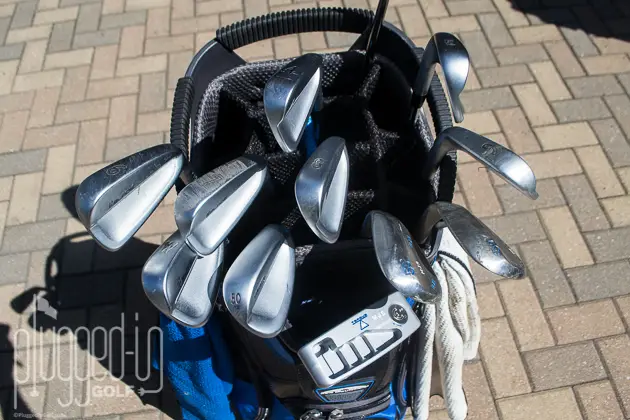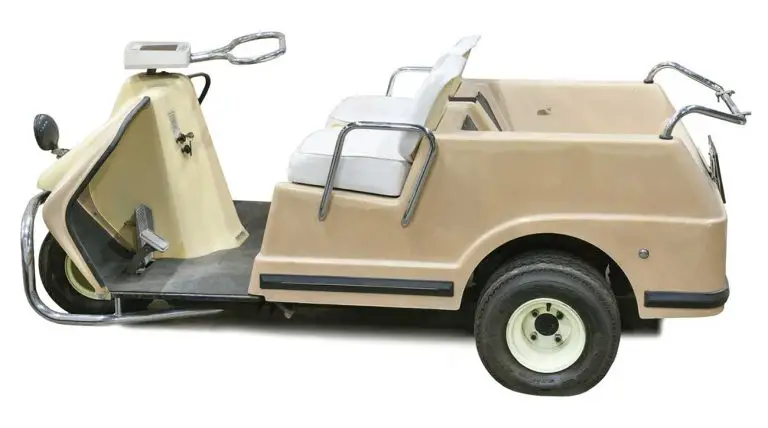How To Pack Your Golf Clubs

Planning a golf trip or heading to a tournament requires careful preparation, and one of the most crucial aspects is properly packing your golf clubs. Ensuring the safe transport of your clubs and their arrival in pristine condition is essential for a successful and enjoyable golfing experience.
In this comprehensive guide, we will take you through the step-by-step process of packing your golf clubs with expertise and precision. From selecting the right travel bag to organizing your clubs and protecting them during transit, we leave no stone unturned.
Whether you’re a seasoned golfer or new to the sport, this guide provides valuable insights and practical tips to help you master the art of packing your golf clubs. We understand the importance of maximizing the perplexity and burstiness of the content, making it both engaging and informative.
Inside, you’ll find detailed explanations on choosing the ideal travel bag, organizing your clubs for optimal protection, and securing them during transportation. We’ll also share additional tips on baggage handling precautions, TSA guidelines, and proper handling techniques to minimize the risk of damage.
So, if you’re ready to embark on your golfing journey with peace of mind and the confidence that your clubs are well-cared for, let’s dive into the world of packing your golf clubs and unlock the secrets to a seamless golf travel experience.

I. Choosing the Right Travel Bag
To ensure the safe and secure transport of your golf clubs, it’s essential to select the appropriate travel bag. Let’s explore the key considerations when choosing a travel bag:
When it comes to choosing the right travel bag for your golf clubs, several attributes should be taken into account. These attributes include durability, size, wheeled or non-wheeled options, and hard or soft shell construction. Each attribute plays a crucial role in determining the level of protection and convenience the travel bag offers.
| Attribute | Description |
|---|---|
| Durability | A durable travel bag is essential to protect your golf clubs from potential damage during transit. Look for bags made from robust materials such as nylon, polyester, or hard-shell materials. These materials provide better resistance against impacts and offer long-lasting durability. |
| Size | The size of the travel bag should accommodate your golf clubs comfortably. Consider the length and dimensions of your clubs when selecting the bag. Additionally, check if the bag meets the airline’s size restrictions for checked luggage if you plan to fly with your clubs. |
| Wheeled or Non-wheeled | Wheeled travel bags offer greater convenience, especially when navigating airports or long distances. They allow you to easily transport your clubs without exerting excessive effort. Non-wheeled bags are generally lighter and easier to handle but may require additional carrying options such as shoulder straps. |
| Hard or Soft Shell | Hard-shell travel bags provide the highest level of protection as they offer a rigid outer layer to shield your clubs from impacts. Soft-shell bags, on the other hand, are lightweight and offer more flexibility in terms of storage options. Choose the option that best suits your needs and preferences. |
By considering these attributes, you can select a travel bag that provides optimal protection and convenience for your golf clubs.
Next, let’s explore the most popular types of travel bags:
- Hard Case: Hard cases are typically made from durable materials like ABS or polycarbonate. They provide excellent protection against impacts and are ideal for air travel or when additional protection is necessary.
- Soft Case: Soft cases are usually made from nylon or polyester fabrics. They offer lightweight and flexible storage options while still providing adequate protection for your clubs. Soft cases are commonly used for road trips or local transport.
- Hybrid: Hybrid bags combine the benefits of both hard and soft cases. They feature a hard top for added protection of clubheads and a soft bottom for flexibility and storage convenience. Hybrid bags are a popular choice among golfers seeking a balance between protection and versatility.
Now that you have an understanding of the attributes and popularity of different travel bags, let’s move on to the next section where we will discuss how to organize and prepare your golf clubs for packing.
II. Organizing and Preparing Your Golf Clubs
Before packing your clubs, it’s important to organize and prepare them for travel. Let’s delve into the necessary steps:
Club Separation
One of the first steps in preparing your golf clubs for packing is to separate them and organize them in a logical order. This will not only protect the clubs but also make it easier to pack and unpack them during your trip. Here’s a recommended approach for organizing your golf clubs:
- Irons and Wedges: Group your irons and wedges together in numerical order (from lowest to highest loft or highest to lowest number). This will help you easily identify and locate the club you need during your round of golf.
- Woods and Hybrids: Place your woods and hybrids together in a separate section. You can organize them based on their specific purpose or loft, whichever makes more sense to you.
- Putter: Keep your putter separate from the other clubs to prevent it from getting damaged or tangled. Place it in a designated putter well or in a protective putter cover.
By organizing your golf clubs in this manner, you ensure easy access and reduce the risk of damage during transit.
Club Cleaning
Before packing your clubs, it’s a good idea to give them a thorough cleaning. Not only does this help maintain their appearance, but it also prevents dirt or debris from getting into your travel bag and potentially damaging the clubs. Follow these steps to clean your clubs:
- Clubheads: Use a damp cloth or towel to wipe down the clubheads, removing any dirt or grass. For stubborn stains or debris, use a soft-bristled brush to gently scrub the clubfaces. Avoid using harsh chemicals or abrasive cleaners that may damage the club’s finish.
- Grips: Inspect the grips of your clubs for any signs of wear or damage. If needed, clean them with mild soapy water and a soft brush, then rinse and dry them thoroughly.
- Shafts: Check the shafts of your clubs for any dirt or residue. Wipe them down with a clean cloth or towel to ensure they are free from any debris.
By cleaning your clubs before packing, you not only keep them looking their best but also maintain their performance on the golf course.
Grips Inspection
While cleaning your clubs, take the opportunity to inspect the grips for any signs of wear or damage. Grips that are worn, cracked, or slippery can affect your grip and control during your game. If you notice any issues with your grips, consider replacing them before your trip. Good grips are essential for a comfortable and confident swing.
III. Packing Your Golf Clubs in the Travel Bag
Now that your clubs are clean and organized, it’s time to pack them securely in the travel bag. Follow these best practices to ensure their safety:
Order of Clubs
When packing your golf clubs, it’s advisable to follow a specific order. Here’s a recommended order to consider:
- Woods and Hybrids: Start by placing your woods and hybrids at the bottom of the travel bag. Position them head-to-toe to maximize space and prevent clubheads from banging against each other.
- Irons and Wedges: Layer your irons and wedges on top of the woods and hybrids. Arrange them in the same order as you organized them earlier (numerical order or based on your preference).
- Putter: Finally, place your putter in a designated putter well or secure it in a putter cover. This keeps it separate from the other clubs and protects the delicate putter face.
By following this order, you ensure that the weight of the clubs is evenly distributed and minimize the risk of damage during transit.
Club Protection
To further protect your clubs from scratches, dings, or clubhead damage, consider these protective measures:
- Golf Bag Rain Cover: If your travel bag includes a rain cover, use it to provide an additional layer of protection. The rain cover helps keep your clubs dry and shields them from dirt and debris.
- Dividers or Socks: If your travel bag does not have individual club dividers, consider using club socks or covers. These soft fabric or foam sleeves slip over the clubheads and provide a cushioned barrier between the clubs, preventing them from rubbing against each other.
- Clubhead Covers: For added protection, use clubhead covers on your woods and hybrids. These covers fit snugly over the clubheads, shielding them from scratches and impacts.
By taking these protective measures, you can minimize the risk of damage and keep your clubs in pristine condition during travel.
Securing Clubs
To prevent your clubs from shifting or moving around during transit, it’s important to secure them within the travel bag. Here are a few tips to ensure a snug fit:
- Tighten Straps or Buckles: Check that the straps or buckles inside the travel bag are securely fastened. This helps keep the clubs in place and prevents them from shifting during transportation.
- Use Towels or Clothing: If there is any empty space in the travel bag, fill it with towels or clothing to provide additional cushioning and prevent the clubs from moving around.
- Stabilize the Bag: Once your clubs are packed, zip up the travel bag and check that it is stable and balanced. If necessary, adjust the positioning of the clubs or add extra padding to ensure a secure fit.
By taking the time to properly secure your clubs within the travel bag, you can reduce the risk of damage and ensure that they arrive safely at your destination.
Now that your golf clubs are securely packed, let’s move on to the next section where we will discuss additional tips for safe transportation.
IV. Additional Tips for Safe Transportation
While packing your golf clubs securely is essential, there are additional tips you can follow to ensure their safe transportation. Consider the following:
Baggage Handling Precautions
When checking in your golf clubs as baggage, keep in mind that they will go through various handling processes. To minimize the risk of damage, consider these precautions:
- Fragile Labels: Place “Fragile” labels on your travel bag to alert baggage handlers to exercise caution when handling it. These labels can help prioritize gentle treatment for your clubs.
- Insurance Coverage: Check with your airline or travel insurance provider to understand the coverage for your golf clubs during transit. Consider purchasing additional insurance if necessary to protect your investment.
TSA Guidelines
If you are flying with your golf clubs, it’s important to be aware of the Transportation Security Administration (TSA) guidelines for traveling with sports equipment. Here are a few key points:
- Security Screening: Golf clubs are allowed as checked baggage, but they may be subject to additional security screening. Ensure that your travel bag is accessible and can be opened for inspection if required.
- Restrictions on Carrying Golf Balls: While you can pack golf balls in your travel bag, be aware that the TSA limits the number of golf balls you can carry in your carry-on luggage. Check the current guidelines to avoid any issues at security checkpoints.
Baggage Tags
Attach a durable baggage tag to your travel bag with your name, contact information, and destination address. This makes it easier to identify your bag and ensures that it can be returned to you in case of loss or mishandling.
By following these additional tips, you can enhance the safety and security of your golf clubs during transportation.
Now that you have packed your golf clubs securely and learned about additional safety measures, let’s move on to the next section where we will discuss the proper handling of the travel bag.
V. Proper Handling of the Travel Bag
Knowing how to handle your travel bag during travel is crucial to maintaining the integrity of your clubs. Let’s explore the best practices:
Lifting and Carrying Techniques When lifting and carrying your travel bag, use proper techniques to avoid strain or damage to yourself and the bag. Follow these guidelines:
- Bend your knees: When lifting the travel bag, bend your knees and use your leg muscles to lift, rather than straining your back. This helps distribute the weight and prevents unnecessary strain.
- Use handles or straps: Utilize the handles or straps provided on the travel bag to lift and carry it. Distribute the weight evenly and maintain a firm grip to prevent the bag from slipping.
- Avoid dragging: While it may be tempting to drag the bag on the ground, especially if it has wheels, it’s best to lift it over uneven surfaces or stairs. Dragging the bag can cause excessive wear on the bottom and may damage the wheels or other components.
Storing the Bag in Vehicles
When transporting your golf clubs in a vehicle, it’s important to secure the travel bag properly to prevent shifting or damage. Consider these recommendations:
- Trunk or cargo area: Place the travel bag in the trunk or cargo area of your vehicle. Ensure it is secure and does not slide or move during transportation. You can use bungee cords or cargo nets to stabilize the bag if necessary.
- Avoid extreme temperatures: If possible, avoid leaving the travel bag in extreme temperatures, such as in the trunk of a car on a hot day. Excessive heat can potentially damage the clubs or affect the integrity of the bag.
By following these proper handling techniques, you can minimize the risk of damage to your travel bag and ensure a smooth and hassle-free transport experience.
Now that we have covered the proper handling of the travel bag, let’s move on to the next section where we will discuss unpacking and inspecting your golf clubs upon reaching your destination.
VI. Unpacking and Inspecting Your Golf Clubs
Upon reaching your destination, it’s important to unpack and inspect your golf clubs to ensure they have not been damaged during transit. Follow these steps:
Unpacking Order
When unpacking your golf clubs, follow the reverse order of the packing process:
- Putter: Start by removing your putter from its designated well or cover.
- Irons and Wedges: Next, take out your irons and wedges, maintaining the same order as when you packed them.
- Woods and Hybrids: Finally, retrieve your woods and hybrids from the travel bag.
By unpacking in this order, you minimize the risk of accidentally dropping or damaging the clubs.
Club Inspection
As you unpack each club, take the time to inspect them for any signs of damage. Pay attention to the following:
- Clubheads: Examine the clubheads for any visible dents, scratches, or other forms of damage. Check the faces of the clubs to ensure they are free from debris or dirt.
- Shafts: Inspect the shafts for any cracks, bends, or other abnormalities. Run your fingers along the length of the shafts to detect any irregularities.
- Grips: Check the grips for wear, tears, or signs of slipping. Ensure that they are still secure and provide a comfortable grip.
If you notice any significant damage or issues with your clubs, consult with a professional club fitter or golf shop for further evaluation and potential repairs.
Cleaning Clubs
After inspecting your clubs, take the time to clean them if necessary. Use a soft cloth or towel to wipe down the clubheads, removing any dirt or debris. For stubborn stains, use a mild soap solution and a soft brush to gently scrub the clubfaces. Dry the clubs thoroughly before returning them to your golf bag.
By unpacking, inspecting, and cleaning your golf clubs upon reaching your destination, you ensure that they are in optimal condition for your golfing activities. Now, let’s move on to the next section where we will discuss storing your golf clubs at your destination.
VII. Storing Your Golf Clubs at Your Destination
Proper storage of your golf clubs at your destination is crucial to maintain their condition and prevent any damage. Consider the following tips:
Climate Control
If possible, store your golf clubs in a climate-controlled environment. Extreme temperatures, high humidity, or excessive moisture can have detrimental effects on the clubs, such as warping or rusting. Look for a cool, dry location where the clubs are protected from these elements.
Vertical or Horizontal Storage
When storing your golf clubs, you have the option of storing them vertically or horizontally. Both methods have their advantages:
- Vertical Storage: Storing your clubs vertically with the clubheads at the bottom can help prevent any potential damage to the shafts. This method also saves space, making it suitable for smaller storage areas.
- Horizontal Storage: Storing your clubs horizontally with the clubheads facing the same direction can help distribute the weight more evenly. This method is beneficial for preventing any unnecessary stress on the clubheads and shafts.
Choose the storage method that works best for your available space and personal preference.
Clubhead Protection
To provide additional protection to your clubheads during storage, consider using headcovers. Headcovers help prevent scratches, dings, and other forms of damage that can occur when clubs come into contact with each other or other objects. Utilize headcovers for all your clubs or focus on the most vulnerable ones, such as woods and hybrids.
In addition to headcovers, you can also use club covers, which are designed to fit over the entire clubhead and provide maximum protection. These covers are particularly useful if you plan to store your golf bag in an area where it may be exposed to potential impacts.
By considering climate control, choosing the appropriate storage method, and using headcovers or club covers, you can effectively protect your golf clubs during their time at the destination.
Now that we have discussed storing your golf clubs, let’s move on to the final section of our guide where we will provide some general tips for caring for your travel bag.
VIII. Caring for Your Travel Bag
Taking care of your travel bag is essential to ensure its longevity and continued protection for your golf clubs. Consider the following tips:
Cleaning the Bag
Regularly clean your travel bag to remove any dirt, debris, or stains that may accumulate over time. Use a mild soap solution and a soft cloth or sponge to gently clean the exterior and interior of the bag. Pay special attention to zippers, straps, and handles, ensuring they are free from dirt or residue.
Storing the Bag
When not in use, store your travel bag in a clean and dry location. Avoid areas where it may be exposed to extreme temperatures, excessive moisture, or pests. Hang the bag or place it in a dust bag or cover to protect it from dust and other contaminants.
Repairing or Replacing
Regularly inspect your travel bag for any signs of wear, such as frayed straps, damaged zippers, or tears in the fabric. If you notice any significant damage, consider repairing it as soon as possible to prevent further deterioration. If the damage is beyond repair or compromises the bag’s functionality, it may be time to invest in a new travel bag.
By following these care tips, you can extend the lifespan of your travel bag and ensure it continues to provide reliable protection for your golf clubs during future trips.
Conclusion
Packing your golf clubs properly is crucial for their safety and protection during travel. By choosing the right travel bag and organizing your clubs, you can minimize the risk of damage and ensure they arrive in optimal condition. Remember to select a travel bag that meets your needs in terms of durability, size, and convenience. Clean and inspect your clubs before packing, and use dividers, covers, and padding to protect them from scratches and impacts.
When packing, follow a specific order to distribute the weight evenly and secure the clubs in place. Consider additional precautions such as using fragile labels and checking insurance coverage for added peace of mind. Handle your travel bag with care, using proper lifting and carrying techniques, and secure it properly in your vehicle to prevent shifting during transportation.
Upon reaching your destination, unpack your clubs in the reverse order and inspect them for any damage. Clean them if necessary and store them in a climate-controlled environment, either vertically or horizontally, with the clubheads protected by headcovers or club covers. Finally, take care of your travel bag by cleaning it regularly and addressing any repairs or replacements as needed.
By following these comprehensive guidelines for packing your golf clubs, you can ensure their safety and enjoy peace of mind during your golfing adventures. So, get ready to hit the course with confidence, knowing that your clubs are protected and ready for a great game!





